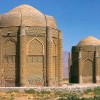
Those well-versed in history as well as global current events have surely heard of the ongoing struggle between the people of Israel and Palestine. The Israel-Palestine conflict began in the middle of the 20th century and is used to refer to the earlier sectarian conflict between the Arabs who were then under the British rule, and the Zionist yishuv or Jewish residents in Palestine.
Early History of the Israel-Palestine Conflict
For centuries, this conflict did not exist and Palestine had been peacefully inhabited by a diverse population of people with different religions composed of 86% Muslim, 10% Christian, and 4% Jewish. So where did this conflict begin?
In the late 1800s, a European group decided to colonize the land. They were known as the Zionists and were the representatives of a certain minority of the Jewish people. The goal of this group was to establish a Jewish homeland. They had been considering other locations in Africa as well as the Americas before deciding to settle on Palestine.
Initially there was no problem as the people of Palestine are used to having a diverse population made up of different sects. However, time passed and more of the Zionists immigrated to the land. This was where the indigenous population felt the need to be alarmed. After some time, fights began to break out and the violence had more alarming manifestations.
During this time, Hitler was also on the rise and so the Jewish people sought refuge in the homeland that the Zionists created. Combined with the activities of the Zionists, there was a faster increase of the Jewish population in Palestine which caused the conflict still being felt by these nations today.
Increased Violence and Continuing Loss of Casualties
The initially seemingly friendly relations between the Arab population in Palestine and the new Zionist settlers turned into a nasty national conflict that living in peace was no longer possible between the people of the land. Palestinian Arab nationalists under the leadership of Haj Amin al-Husseini, who was the leader of Mandatory Palestine which was then under the British rule, moved to establish their national home for the Arabs of Palestine. They had riots waged against the Jews in 1920, and because of this, the Jews established the Haganah or “The Defense” which was later known as the Israel Defense Forces.
For years, there was an onslaught of military conflict between the Arabs of Palestine and the Zionists who increased in number, especially after more Jews went to Palestine as a safe harbor, out of Hitler ’s reach. A great number of Arab nationalists from all over the Middle East went to join the cause. One notable figure is Izaddin al-Qassam, the Syrian who established the militant group referred to as the “Black Hand.” He planned the Arab revolt which happened in 1936. The wave of violence from this movement lasted up until 1937 when a forced expulsion of Arab leaders was performed.
That event lead to the formation of the Peel Commission which aimed to have a partition within Palestine, but this was rejected by the Arabs. The main Jewish leaders, namely David Ben-Guiron and Chaim Weizmann accepted, but some of the secondary leaders did not agree to it.
Almost 5,000 casualties were lost after the renewed violence which lasted until the Second World War, mostly coming from the Arab forces. Since the WWII became a more pressing concern, the issues of Mandatory Palestine quieted for a time.
When WWII ended, the crisis revolving around the Holocaust survivors prompted a renewed tension between the original inhabitants of Palestine and the increased number of the new Jewish settlers. The British established immigration quotas, but at the same time, illegal immigration coupled with Zionist revolts were also on the rise.
Peace Efforts to Resolve the Conflict
Because of this, the General Assembly of the United Nations decided to intervene in 1947 to achieve peace. They adopted the Resolution 181(II) which recommended the plan of turning Palestine into an Arab state, and the City of Jerusalem into a Jewish state. Right after the announcement, Palestine was again in turmoil which led to more unwanted violence despite the peace plans of the UN. In 1948, the yishuvs gained more territory and the Palestinian Arabs began to dwindle in number.
Support came for the Palestinian Arabs in the 1948 Arab-Israeli War which led to over 15,000 casualties. Egypt and Jordan supported the Palestinians while the Israelis continued with their reprisal operations. The Zionists outnumbered the Arabs which was why in the end of the war in 1949, the Israelis had conquered over 78% of Palestine.
Despite the long and ongoing peace efforts and even after Israel ’s peace with Egypt and Jordan, Israel and Palestine still have not reached a final agreement for peace. The key issues still to be resolved include but are not limited to borders, water rights, Israeli settlements, control over Jerusalem, and mutual recognition.
, Understanding the Conflict between Israel and Palestine www.ozeldersin.com bitirme tezi,ödev,proje dönem ödevi
